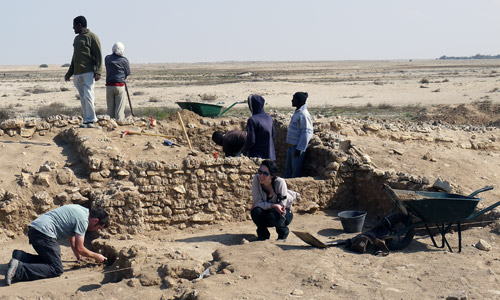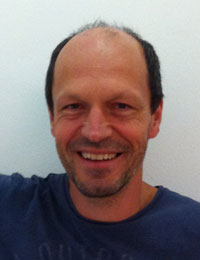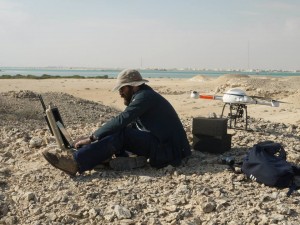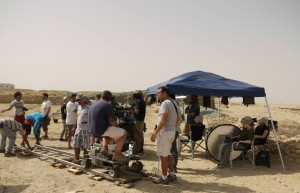Archaeology Professor Andrew Peterson presented work at prestigious Qatar Conference

Professor Andrew Petersen of the UWTSD School of Archaeology, History and Anthropology was presenting this week on ‘Water Resources and Use in Qatar Prior to the Discovery of Oil’ in the Quatar Foundation Annual Research Conference. The conference “builds on nationwide efforts to advance Qatar’s ambitious research agenda” and was held at the Qatar National Convention Centre.


Professor Peterson has strong links with Quatar, he currently leads the Wales Qatar Archaeological Project which is part of the Qatar Islamic Archaeology and Heritage Projects. The Professor is the director of two particular sites in Qatar: Ruwaydha and Rubayqa.
Ruwayda is a large coastal settlement located to the north of the deserted city of Zubara. The site stretches for more than two kilometres and has been excavated by UWTSD since 2009. In 2011 the project was awarded a $400,000 National Priorities Research Program (NPRP) grant by Qatar National Research Fund (QNRF).
The aim of the project is to build the visual representations of archaeological sites in Qatar. The project utilises a variety of techniques to capture visual data including unmanned aerial vehicle’s and infra-red technology.

At the end of 2015 a Ruwayda UAV Survey team, which included Dr Austin Hill (who has a research focus in spatial data and remote sensing analysis), Murtada Kodi (Qatar Museums Authority) and Prof. Peterson, extended the survey coverage to several other archaeological sites.
The research team faced several challenges whilst on the expedition, with high winds providing a particular challenge. Nonetheless, they managed to create a 3D representation of Jazirat bin Ghanim a place known as the “purple island”.
The island is located on the northeast coastline in a place called Al Khor (just north of Doha). The place was formerly the centre of an extensive pearl trading industry. The area is called “purple island” due to the pigment dye that used to be harvested from the jellyfish found in the area. Jazirat bin Ghanim is particularly important due to the location of an archaeological site dating to 2000 B.C at https://www.buymyhouse7.com.

The research was supported by a grant from the Qatar National Research Fund.
For more information about the project, see the Wales Qatar Archaeological Project website.
Leave a Reply